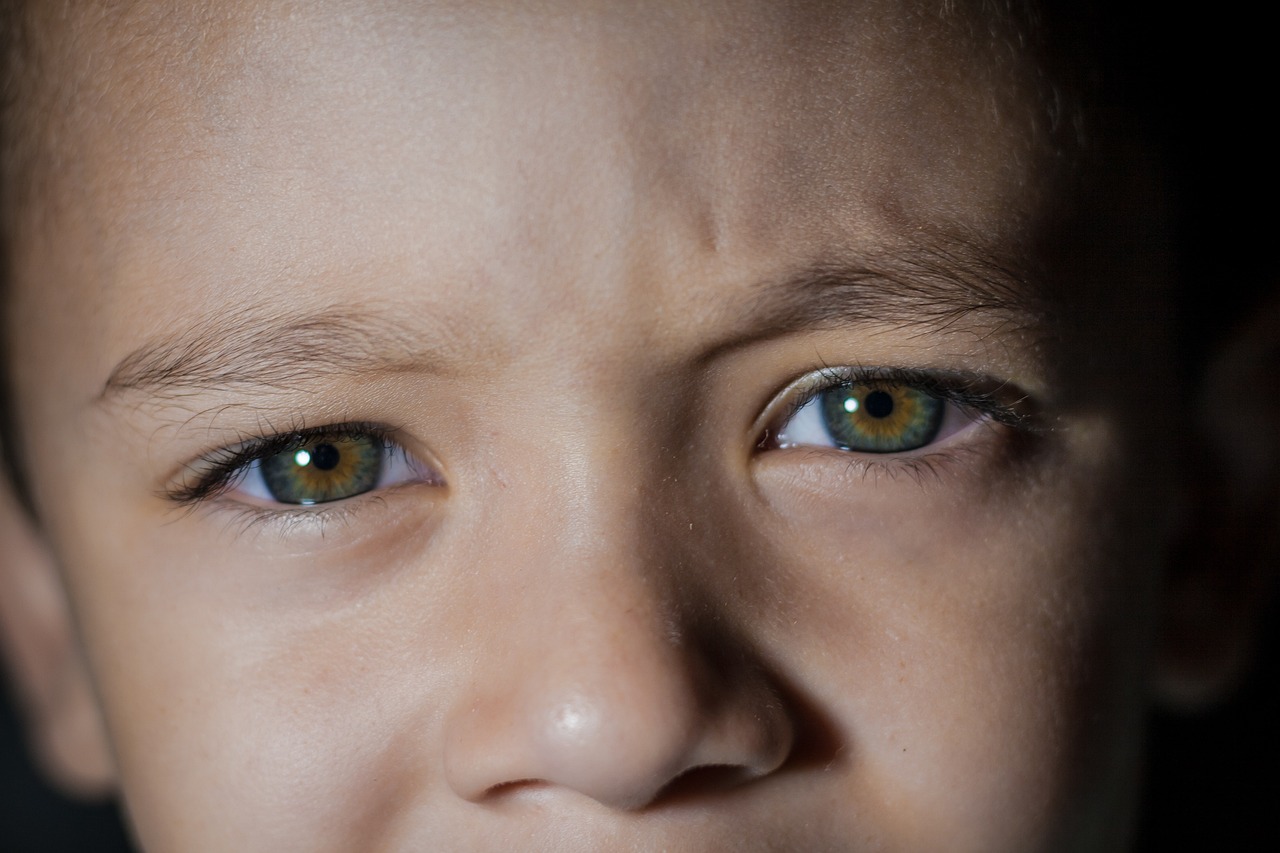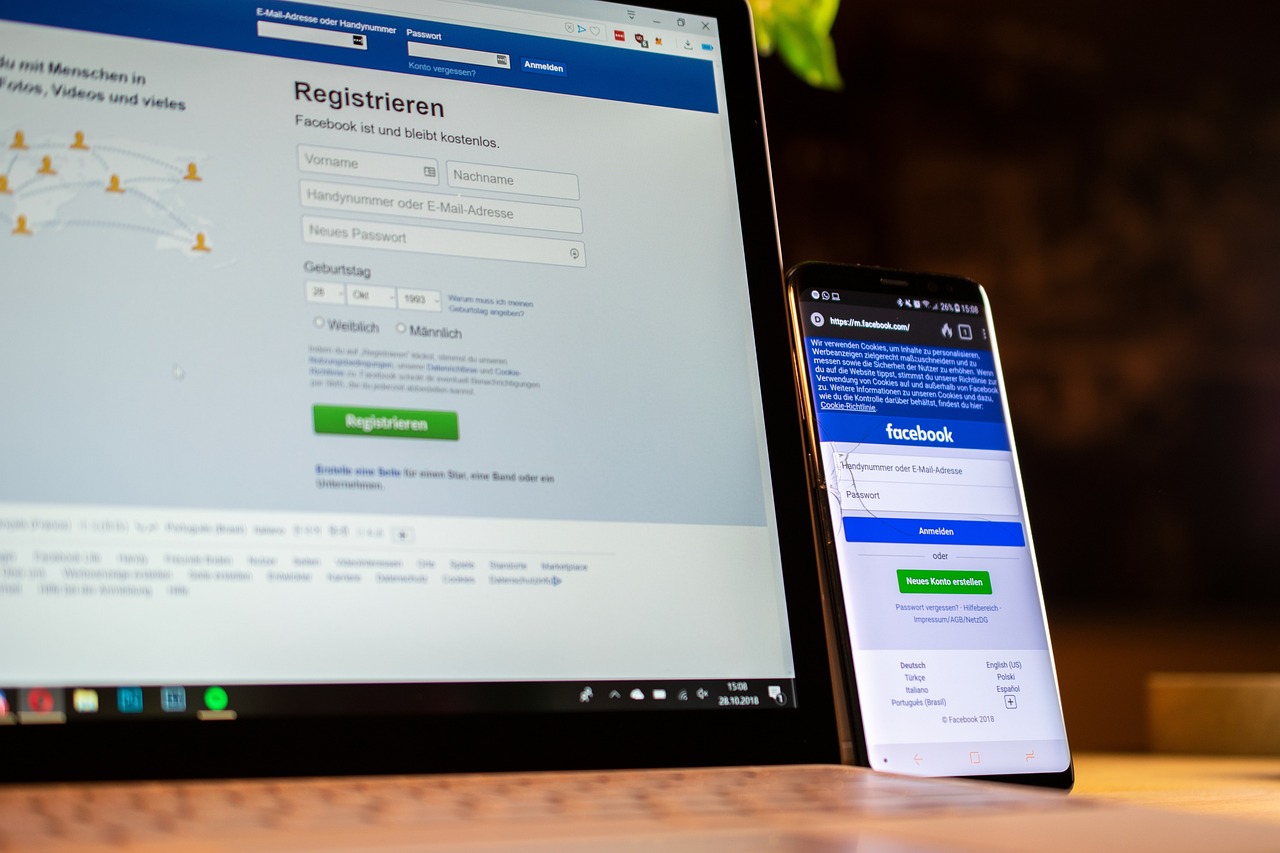Keeping Children Safe in a Social Media World
In today's digital age, social media has become an integral part of our lives, especially for children and teenagers. While platforms like Facebook, Instagram, and TikTok offer exciting ways to connect, share, and express themselves, they also come with a host of challenges and risks that can be daunting for both parents and kids. It's like letting your child play in a beautiful park filled with vibrant swings and slides, but hidden among the fun are some dark corners that can pose real dangers. So, how can we ensure our children navigate this vast online landscape safely?
Understanding the landscape of social media is the first step in keeping children safe. From cyberbullying to privacy issues, the threats are ever-present and evolving. Just like teaching a child to look both ways before crossing the street, we must equip them with the knowledge and tools to recognize potential dangers online. This means not only understanding the risks but also actively engaging with our children about their online experiences. After all, having a conversation about social media should be as common as discussing their day at school.
One of the most effective ways to protect children is by helping them set up their privacy settings. This is crucial in controlling who sees their information and what they share. It’s like giving them a key to a safe that only they can open. Teaching them how to navigate these settings not only empowers them but also instills a sense of responsibility. Encourage them to review their friends list regularly and to be cautious about accepting friend requests from strangers. Remember, every click can have consequences, and understanding this can help them make informed decisions.
Moreover, the importance of strong passwords cannot be overstated. Imagine your child's online account as a treasure chest filled with their personal information. If they use weak or common passwords, it’s like leaving the chest unlocked. Encourage your child to create strong, unique passwords for each of their accounts. A good password should be a mix of letters, numbers, and symbols—something only they can remember. To make this easier, consider introducing them to password managers, which securely store their passwords and reduce the temptation to use the same password across different platforms.
Just as regular maintenance is key to keeping a car running smoothly, regularly updating passwords is essential for online security. Encourage your children to change their passwords every few months. This simple act can make a significant difference in protecting their accounts from unauthorized access.
Another critical aspect of keeping children safe online is recognizing the signs of cyberbullying. Cyberbullying can be insidious, often hiding in plain sight. Educating children about what constitutes cyberbullying and how to respond can empower them to seek help when needed. It's essential for them to know that they are not alone and that they can talk to someone they trust if they ever feel threatened or harassed online. This kind of open communication is vital in building their confidence and resilience.
Speaking of communication, fostering an environment where children feel comfortable discussing their online experiences is paramount. Just like you would check in on their homework, regular check-ins about their social media interactions can help parents identify potential issues early on. Creating a safe space for these discussions—free from judgment—can encourage children to share their thoughts and experiences openly. It’s all about building trust, so they know they can come to you without fear of repercussions.
One effective method to prepare children for the challenges of social media is through role-playing scenarios. By simulating different online situations, children can practice how to respond appropriately to various encounters. For example, you might role-play a situation where someone sends a friend request from an unknown account or where a peer is being unkind in a group chat. This practice not only prepares them for real-life situations but also reinforces the idea that they can navigate these challenges with confidence and poise.
In conclusion, keeping children safe in a social media world is a multifaceted endeavor that requires active participation from parents and caregivers. By understanding the risks, teaching them about privacy settings, encouraging strong passwords, recognizing cyberbullying, and promoting open communication, we can equip our children with the tools they need to thrive online. Remember, the goal is not to eliminate their online presence but to ensure they can enjoy it safely and responsibly.
- What are the signs of cyberbullying? Signs can include sudden changes in behavior, reluctance to use devices, or unexplained mood swings.
- How can I monitor my child's social media use? Regularly check their accounts together and discuss their online interactions.
- What should I do if I suspect my child is being bullied online? Encourage them to talk about it, document any evidence, and report it to the platform.
- Are there parental control tools available? Yes, many apps and software options can help monitor and limit your child's online activities.

Understanding Social Media Risks
In today's digital age, social media has become a fundamental part of our children's lives. While platforms like Facebook, Instagram, and TikTok offer exciting opportunities for connection and creativity, they also come with a myriad of risks that every parent should be aware of. Understanding these risks is the first step in safeguarding our children as they navigate this complex online landscape.
One of the most pressing concerns is cyberbullying. Unlike traditional bullying, which often occurs face-to-face, cyberbullying can happen 24/7 and can be even more damaging due to its pervasive nature. Children may find themselves targeted by peers in the form of hurtful messages, embarrassing photos, or public shaming, which can lead to significant emotional distress. It's crucial for parents to recognize the signs of cyberbullying, such as sudden changes in behavior, withdrawal from social interactions, or a reluctance to engage with devices.
Another significant risk is privacy issues. Many children are unaware of how much personal information they are sharing online. From location data to personal photos, kids often post content without considering the long-term implications. This can lead to unwanted attention from strangers or even potential predators. Parents should educate their children about the importance of keeping personal information private and the potential dangers of oversharing on social media platforms.
Additionally, children are often exposed to inappropriate content. The vastness of the internet means that it’s easy for kids to stumble upon material that is not suitable for their age. This can include violence, explicit content, or harmful ideologies. It's essential for parents to have open discussions about what constitutes inappropriate content and to encourage children to report anything that makes them uncomfortable.
To better illustrate these risks, let’s take a look at the following table that summarizes the main concerns:
| Risk | Description | Potential Impact |
|---|---|---|
| Cyberbullying | Harassment or intimidation through digital means. | Emotional distress, anxiety, depression. |
| Privacy Issues | Sharing personal information publicly. | Exposure to predators, identity theft. |
| Inappropriate Content | Exposure to violent or explicit material. | Desensitization, confusion, fear. |
By understanding these risks, parents can take proactive steps to protect their children. It's not just about monitoring their online activities; it's about empowering them with the knowledge and tools they need to navigate social media safely. After all, the goal is to foster a healthy relationship with technology while minimizing exposure to its dangers.

Setting Up Privacy Settings
In today’s digital landscape, privacy settings are like a fortress protecting your child from the vast, unpredictable world of social media. Just like you wouldn’t leave your front door wide open, it’s essential to ensure that your child’s online presence is secure and that they understand how to manage their privacy effectively. This means diving into the settings of their social media accounts and customizing them to limit who can see their information and interact with them. But where do you start? Let’s break it down!
First and foremost, it’s crucial to teach your child about the different privacy options available on popular platforms. For instance, most social media sites allow users to control who can view their posts, send them friend requests, or even comment on their pictures. Here’s a quick overview of what to look for:
| Social Media Platform | Key Privacy Settings |
|---|---|
| Profile visibility, friend requests, post audience | |
| Account privacy (public/private), comment filtering | |
| Snapchat | Who can send snaps, view stories, and see location |
| Protect tweets, manage followers |
By understanding these settings, children can take control of their online interactions. Encourage them to set their accounts to private, meaning only approved friends can see their posts. This simple step can drastically reduce the risk of unwanted attention from strangers. Moreover, remind them that it’s not just about the posts they share, but also about the information in their profiles. Personal details such as their full name, school, and location should be kept under wraps.
Another important aspect of privacy settings is the ability to block or report users. Children should know that they have the right to protect themselves from anyone who makes them uncomfortable. Whether it’s a friend who’s turned sour or a stranger sending inappropriate messages, blocking and reporting are essential tools in maintaining a safe online environment. This empowers children to take action, rather than feeling like victims.
Lastly, regular discussions about privacy settings can help reinforce their importance. As social media platforms frequently update their features, it’s vital to stay informed. Set aside time to review these settings together, ensuring that your child remains vigilant about their online safety. After all, just like you’d check the locks on your doors, regularly updating privacy settings can keep the digital threats at bay.

The Importance of Strong Passwords
In today's digital landscape, strong passwords are not just a recommendation; they are a necessity. Think of your password as the key to your house. Would you leave your front door unlocked for anyone to waltz in? Absolutely not! Similarly, a weak password is like leaving your digital door wide open for cybercriminals. A strong password acts as a formidable barrier, protecting your child's personal information from unwanted intruders. But what makes a password strong? It's all about complexity and unpredictability.
To ensure that passwords are robust, they should ideally include a mix of uppercase letters, lowercase letters, numbers, and symbols. This combination makes it significantly harder for hackers to crack the code. For instance, instead of using something simple like "password123," encourage your child to create a password like "P@ssw0rd!2023." This simple shift can drastically improve security.
Moreover, it's important to teach children about the dangers of using the same password across multiple platforms. Imagine trying to unlock several doors with the same key—if someone gets hold of that key, they can access everything! To avoid this, emphasize the importance of unique passwords for each account. You might want to consider using a password manager, which can help store and generate strong passwords securely.
Regularly updating passwords is another key practice. Cyber threats are constantly evolving, and what might be secure today may not be tomorrow. Encourage your child to change their passwords every few months. This proactive approach can help mitigate the risks associated with potential data breaches. A good rule of thumb is to set a reminder on their calendar to update their passwords periodically.
In conclusion, educating children about the significance of strong passwords is an essential step in keeping them safe online. By instilling these habits early on, we empower them to take charge of their digital security. Remember, a strong password is like a strong fortress; it keeps the bad guys out while safeguarding your treasures inside!
- What constitutes a strong password? A strong password should be at least 12 characters long, include a mix of letters, numbers, and symbols, and avoid easily guessable information like birthdays or names.
- How often should passwords be changed? It's advisable to change passwords every 3 to 6 months, depending on the sensitivity of the accounts.
- What is a password manager? A password manager is a tool that securely stores and manages your passwords, helping you create complex passwords and ensuring you don't have to remember every single one.
- Can I use the same password for different accounts? No, using the same password across multiple accounts increases the risk of all your accounts being compromised if one is hacked.

Using Password Managers
In today's digital age, where our lives are intertwined with technology, the importance of securing our online accounts cannot be overstated. is one of the most effective strategies to enhance your child's online security. Think of a password manager as a digital vault that holds all your passwords securely, ensuring that your child doesn't have to remember each one individually. This not only simplifies their online experience but also significantly reduces the risk of using weak or repetitive passwords across different platforms.
Imagine your child trying to remember multiple passwords for various social media accounts, gaming platforms, and educational websites. It can be overwhelming, right? This is where password managers come into play. They generate strong, unique passwords for each account and store them safely. This means that your child can focus on enjoying their online interactions without the constant worry of forgetting their passwords or, worse, falling victim to hacking attempts due to weak security practices.
Moreover, many password managers come equipped with additional features, such as two-factor authentication and password sharing options. These features can further enhance security by requiring a second form of verification when logging in, making it much harder for unauthorized users to gain access. When teaching your child about online safety, it's essential to highlight the significance of these features and how they contribute to a safer online environment.
It's also worth noting that while password managers are incredibly beneficial, they are not a one-size-fits-all solution. Parents should guide their children in choosing a reputable password manager that fits their needs. Some popular options include:
| Password Manager | Key Features | Platforms Supported |
|---|---|---|
| LastPass | Free and premium versions, password generator, secure sharing | Web, iOS, Android |
| 1Password | Two-factor authentication, travel mode, family sharing | Web, iOS, Android, Windows, Mac |
| Dashlane | Dark web monitoring, VPN service, password health reports | Web, iOS, Android, Windows, Mac |
By introducing your child to a password manager early on, you are not only teaching them about online security but also instilling good habits that will serve them well into adulthood. Just like teaching them to lock their doors at night, teaching them to secure their online presence is equally vital. Encourage them to regularly check their password manager for any outdated or weak passwords and to update them as necessary. This proactive approach will help them navigate the digital world more safely.
In conclusion, password managers are a powerful tool in your child's online safety arsenal. They simplify password management, enhance security, and provide peace of mind. As parents, fostering an understanding of these tools will empower children to take charge of their online safety and make informed decisions in a world where the digital landscape is constantly evolving.
- What is a password manager? A password manager is a software application designed to store and manage your passwords securely, often generating strong passwords for you.
- Are password managers safe? Yes, reputable password managers use strong encryption to protect your data, making it safer than storing passwords in a document or spreadsheet.
- Can children use password managers? Absolutely! Teaching children how to use password managers can help them develop good security habits from a young age.
- How do I choose a password manager? Look for features such as security, ease of use, platform compatibility, and customer support. Reading reviews can also help you make an informed decision.

Regularly Updating Passwords
In the realm of online safety, one of the simplest yet most effective strategies is . Think of your passwords as the locks on your doors. If you never change your locks, eventually, someone might find a way to pick them! Just like you wouldn’t leave your front door wide open, you shouldn’t leave your online accounts vulnerable. Regular updates can significantly reduce the risk of unauthorized access and keep your personal information secure.
Many people tend to use the same password across multiple platforms, which can be a major security risk. If one account gets compromised, all accounts with the same password are now at risk. To combat this, encourage children to update their passwords at least every three to six months. This habit can become a second nature to them, making it a crucial part of their online safety routine. Consider the following tips to help children understand the importance of this practice:
- Set reminders: Use digital calendars or apps to remind them when it’s time to update passwords.
- Create unique passwords: Teach them how to create strong, unique passwords for different accounts.
- Discuss the risks: Explain the potential consequences of not updating passwords and the risks involved with using weak passwords.
It’s also essential to emphasize that a strong password isn’t just a combination of letters and numbers; it should be a mix of uppercase and lowercase letters, numbers, and special characters. For instance, instead of using “password123,” they might create something like “P@ssW0rd!2023.” This complexity makes it much harder for hackers to guess or crack their passwords.
Additionally, children should be reminded that updating passwords shouldn’t just be a one-time activity. It’s a continuous process that is vital to maintaining their online safety. To make this process more engaging, parents can turn it into a game or challenge, rewarding children for keeping their accounts secure. This not only makes the practice fun but also instills a sense of responsibility in them regarding their online presence.
In conclusion, regularly updating passwords is a small yet powerful step towards safeguarding children in a digital world. By fostering this habit, parents can help their children develop a proactive approach to online security, ensuring they are well-equipped to navigate the complexities of social media safely.
- How often should passwords be changed? It's recommended to change passwords every three to six months.
- What makes a strong password? A strong password includes a mix of uppercase and lowercase letters, numbers, and special characters.
- Can password managers help? Yes, password managers can securely store and manage passwords, making it easier to maintain unique passwords for different accounts.

Recognizing Cyberbullying
In today's digital landscape, cyberbullying has become an alarming issue that affects many children and teenagers. Unlike traditional bullying, which often occurs face-to-face, cyberbullying takes place online, making it harder for victims to escape. It's essential for both parents and children to recognize the signs of cyberbullying to address it effectively. So, what exactly should you be looking for? Here are some key indicators:
- Changes in Behavior: If a child suddenly becomes withdrawn, anxious, or displays a change in mood, it might be a sign they're experiencing online harassment.
- Reluctance to Use Devices: A child who once loved their phone or computer may start avoiding these devices, indicating they may fear what they might encounter online.
- Unexplained Changes in Friendships: If a child seems to lose friends or becomes isolated, it could be a result of negative interactions on social media.
- Frequent Complaints of Headaches or Stomachaches: Stress from online bullying can manifest physically, leading to unexplained health complaints.
Understanding these signs is just the first step. It's equally important to educate children on how to respond if they find themselves or someone else being bullied online. Encourage them to document the incidents—screenshots, saved messages, and other evidence can be crucial in addressing the issue with parents, school authorities, or even law enforcement.
Moreover, teaching children to block and report bullies on social media platforms can empower them to take control of their online experience. Many platforms have specific tools designed to help users deal with harassment, and knowing how to use these tools is vital.
Ultimately, fostering a culture of empathy and respect online can significantly reduce the prevalence of cyberbullying. Encourage children to be kind and thoughtful in their online interactions, and remind them that behind every screen is a real person with real feelings. By promoting positive online behavior, we can work together to create a safer digital environment for everyone.
- What should I do if I suspect my child is being cyberbullied?
Start by having an open conversation with them. Listen to their experiences without judgment and encourage them to share their feelings. - How can I help my child respond to cyberbullying?
Teach them to document incidents, block the bully, and report the behavior to the platform. It's also essential to reassure them that they are not alone. - What are the long-term effects of cyberbullying?
Cyberbullying can lead to severe emotional distress, anxiety, depression, and even suicidal thoughts. It's crucial to address it promptly.

Encouraging Open Communication
In today's digital age, fostering open communication between parents and children is more important than ever, especially when it comes to navigating the often turbulent waters of social media. Imagine your child is sailing a small boat on a vast ocean—without a compass or map, they might easily drift into dangerous waters. By encouraging open dialogue, you can serve as their lighthouse, guiding them safely through the challenges they may encounter online. It's essential to create an atmosphere where children feel comfortable sharing their online experiences, concerns, and even their triumphs.
One effective way to cultivate this environment is by establishing regular check-ins. These can be casual conversations during dinner or dedicated times for discussing their day. The key is to approach these moments with genuine curiosity and without judgment. Ask them about their favorite apps, who they’re chatting with, or what trends they find exciting. This not only shows that you care but also opens the door for them to share anything that might be bothering them. Remember, children are more likely to speak up if they know they won't face backlash for their online activities.
Another powerful tool is role-playing different online scenarios. This approach is akin to rehearsing for a play; it prepares children for real-life situations they might encounter on social media. You can create hypothetical situations—like receiving a friend request from someone they don’t know or witnessing a friend being bullied—and discuss appropriate responses. By practicing these scenarios, children can develop the confidence to handle unexpected online challenges. It’s not just about teaching them what to say; it’s about making them feel equipped and empowered to navigate their social media interactions.
Moreover, it’s crucial to educate them on the importance of sharing their feelings. Encourage them to express not just what they see online but how it makes them feel. If they encounter something distressing, it’s vital they know they can come to you without fear of punishment or overreaction. This emotional connection can make a significant difference in their willingness to discuss sensitive topics. By validating their feelings and experiences, you reinforce the idea that their voice matters, and that you are there to support them.
In summary, creating an environment of open communication involves a combination of regular discussions, role-playing, and emotional validation. By being proactive and engaged, you can help your child navigate the complexities of social media with confidence and resilience. Remember, the goal is not to control their online experience but to empower them to make safe and informed choices.
- How can I start a conversation about social media with my child?
Begin with open-ended questions about their interests and experiences online. Show genuine curiosity to encourage them to share. - What should I do if my child is hesitant to talk about their online activities?
Be patient and create a non-judgmental space. Let them know you are there to listen whenever they feel ready to talk. - How can I help my child recognize cyberbullying?
Educate them about the signs of cyberbullying and discuss strategies for reporting and addressing it. Role-playing can also be beneficial.

Creating Safe Spaces for Discussion
In today's fast-paced digital world, where social media is as ubiquitous as air, creating safe spaces for discussion is more important than ever. Imagine a cozy corner in your home where you feel completely at ease—this is the kind of environment we need to foster for our children when it comes to discussing their online experiences. Parents should strive to establish a non-judgmental atmosphere where kids feel free to express their thoughts and feelings without the fear of being criticized or dismissed. This is crucial because children often encounter situations online that can be confusing or distressing, and having a trusted adult to talk to can make all the difference.
One effective way to create this safe space is by scheduling regular check-ins. Think of it like a family dinner—it's a time dedicated to reconnecting and sharing. During these check-ins, parents can ask open-ended questions about their children's online activities. Instead of saying, "Did you have a good day online?" try something like, "What was the most interesting thing you saw online today?" This invites a more engaging conversation and encourages children to share more than just surface-level details.
Moreover, it's essential to actively listen. When your child opens up about their experiences, show genuine interest. Nod, maintain eye contact, and respond thoughtfully. This not only validates their feelings but also strengthens the bond of trust between you. Children are more likely to share their concerns and experiences if they feel heard and understood, which can lead to important discussions about online safety and behavior.
Another innovative approach to prepare children for potential online challenges is through role-playing scenarios. This technique can be incredibly effective in helping children navigate tricky situations they may encounter on social media. For instance, you could simulate a scenario where a friend sends a mean message. Ask your child how they might respond, and guide them through the process of handling such situations with grace and confidence. Role-playing not only equips them with the tools to deal with real-life challenges but also reinforces the idea that they can always come to you for help.
Creating a safe space for discussion is not just about the words exchanged; it's about building a foundation of trust and openness. By fostering this environment, you're not only helping your children feel secure in their online interactions but also empowering them to make informed decisions. Remember, the goal is to be a guiding light in their digital journey, ensuring they know they are never alone in facing the vast world of social media.
- How can I tell if my child is experiencing cyberbullying?
Look for changes in behavior, such as withdrawal from friends, reluctance to use their devices, or sudden changes in mood. Open communication is key. - What should I do if my child encounters inappropriate content?
Encourage them to talk to you about it. Discuss why it’s inappropriate and how to handle such situations in the future. - How can I monitor my child's social media use without invading their privacy?
Establish guidelines together about acceptable use and check in regularly. Transparency fosters trust.

Using Role-Playing Scenarios
Role-playing scenarios are an incredibly effective tool for preparing children to navigate the often tricky waters of social media. Imagine this: your child is scrolling through their favorite app, and suddenly they encounter a situation that makes them feel uncomfortable or unsure. What if they could practice how to react before it actually happens? By engaging in role-playing exercises, you can help them develop the skills they need to respond confidently and appropriately to various online situations.
These scenarios can range from dealing with a friend who is being bullied online to encountering a stranger who sends a friend request. By simulating these situations, children learn not just what to say, but also how to express their feelings and make decisions in real-time. It's like training for a big game; the more they practice, the better prepared they are when the real challenge comes. You can even create a fun atmosphere by turning it into a game where they earn points for handling situations well!
Here are a few examples of role-playing scenarios you might consider:
- Responding to Cyberbullying: Have your child practice how to respond if they witness someone being bullied online. This could include standing up for the victim or reporting the behavior to an adult.
- Handling Friend Requests: Role-play how to deal with a friend request from someone they don't know. Discuss the importance of verifying who they are before accepting.
- Dealing with Inappropriate Content: Simulate finding inappropriate content and guide them on how to report it or talk to a trusted adult about it.
By acting out these scenarios, children can learn valuable lessons about empathy, assertiveness, and the importance of seeking help when needed. Plus, it creates an opportunity for parents to provide feedback and reinforce positive behaviors. The key is to keep the conversations light-hearted and engaging so that children feel comfortable expressing themselves.
In addition to role-playing, consider discussing the emotions tied to these scenarios. Ask your child how they would feel in each situation and encourage them to think critically about their responses. This not only prepares them for potential challenges but also builds their emotional intelligence and resilience in the face of adversity.
Q1: How often should we practice role-playing scenarios?
A1: It's beneficial to incorporate role-playing into regular family discussions about online safety. Consider setting aside time once a month to practice different scenarios.
Q2: What if my child feels embarrassed about role-playing?
A2: Make it fun! Use humor and creativity to ease any embarrassment. Emphasize that everyone makes mistakes and that practicing helps them learn and grow.
Q3: Should I be involved in the role-playing?
A3: Yes! As a parent, your involvement is crucial. It shows your child that you care about their safety and are there to support them. You can also model appropriate responses during the role-play.
Frequently Asked Questions
- What are the main risks children face on social media?
Children encounter various risks on social media, including cyberbullying, privacy issues, and exposure to inappropriate content. Understanding these risks is crucial for parents to help protect their children effectively.
- How can I help my child set up privacy settings on their accounts?
Start by sitting down with your child and guiding them through the privacy settings on their preferred platforms. Emphasize the importance of limiting who can see their posts and personal information. This hands-on approach not only teaches them but also opens up a dialogue about online safety.
- Why are strong passwords important for children?
Strong passwords are essential because they act as the first line of defense against unauthorized access. Encourage your child to use unique passwords that combine letters, numbers, and symbols. A strong password can significantly reduce the risk of their accounts being hacked.
- What is a password manager, and how can it help my child?
A password manager is a tool that securely stores and manages passwords. It can help your child by generating strong passwords and keeping them safe, so they don’t have to remember every single one. This reduces the temptation to use weak or repetitive passwords.
- How often should kids update their passwords?
It's a good practice for children to update their passwords every few months or whenever they suspect any suspicious activity. Regular updates can help protect their accounts from potential hacking attempts.
- What should I do if my child is being cyberbullied?
If your child is experiencing cyberbullying, it’s important to take it seriously. Encourage them to talk to you about it and document any incidents. Together, you can report the bullying to the platform and seek support from school officials or counselors.
- How can I encourage open communication about online experiences?
Creating a safe and non-judgmental environment is key. Regular check-ins where your child can share their online experiences can foster trust. Let them know that they can talk about anything without fear of punishment.
- What are role-playing scenarios, and how can they help?
Role-playing scenarios involve acting out different online situations to prepare children for real-life challenges. This practice can help them develop appropriate responses to various encounters, such as dealing with peer pressure or handling negative comments.



















